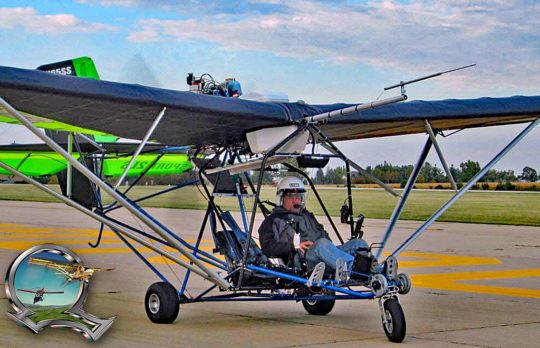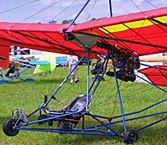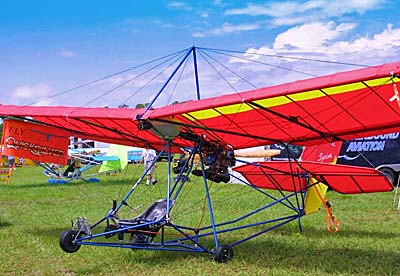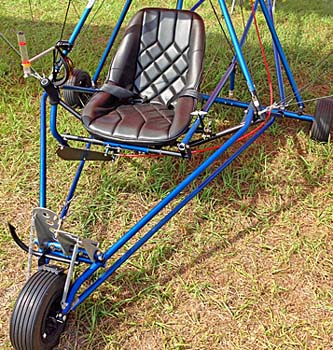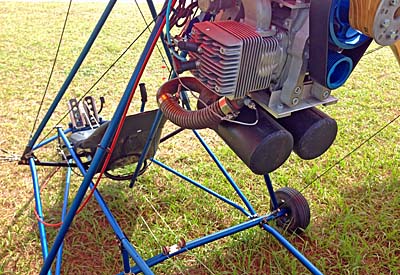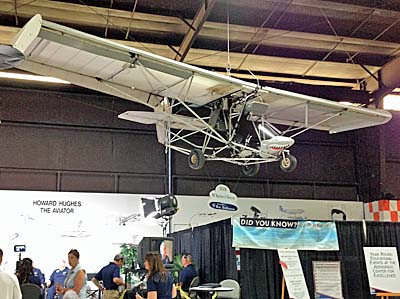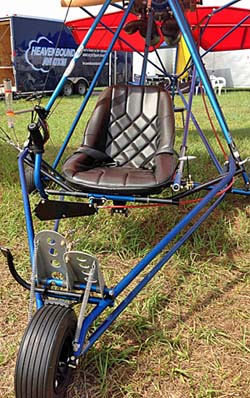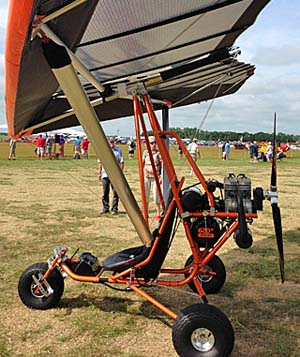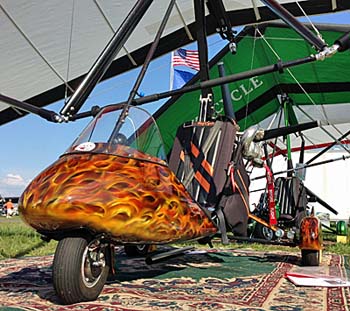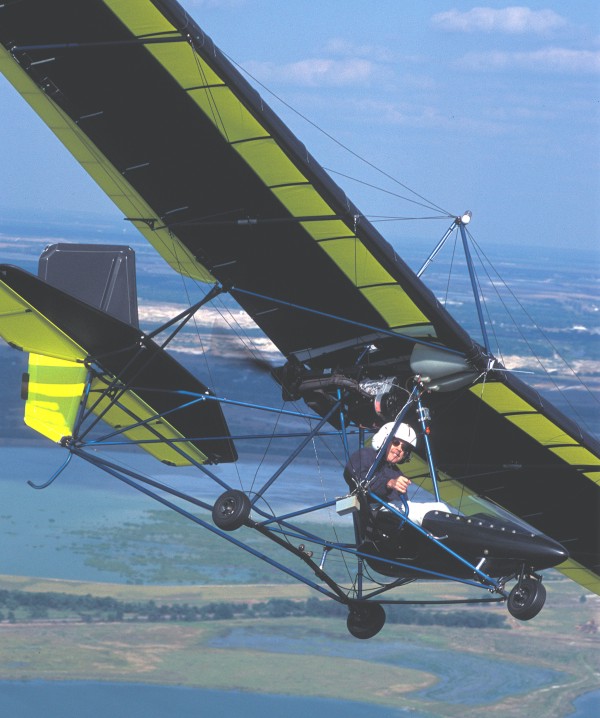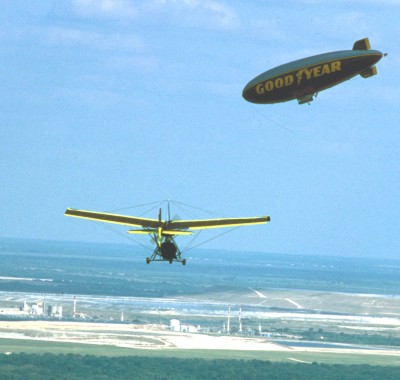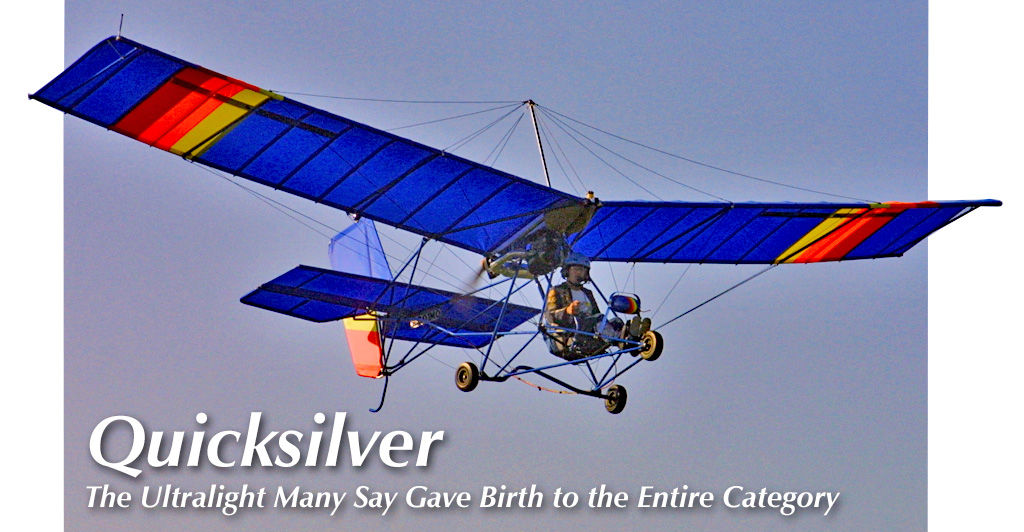
Ah, the Quicksilver! Where to start with this veritable icon of the ultralight sector? With more than 15,000 flying, it even outranks Van’s Aircraft for kit aircraft that made it into the air — although Van’s has sold more kits in total and no one disputes the Western brand’s leadership position. The earliest Quicksilvers were hang gliders (last photo). Engines came later but at first the weight-shift seat stayed (nearby image). The pilot had lateral control — still by weight shift — but via lines that moved surfaces. Pitch, however, was fully controlled by the pilot moving his or her body. Those were fun days and provided wonderful memories (yes, I flew them as weight-shift aircraft). Yet the brand went on to vastly greater development. In this article, our focus is on the original three-axis control model, the oh-so-famous MX (multiple axis). Quicksilver MX Quicksilver’s MX entered the market in the early 1980s, like all the models featured in our Vintage Ultralight series.


 With more than 15,000 flying, it even outranks Van's Aircraft for kit aircraft that made it into the air — although Van's has sold more kits in total and no one disputes the Western brand's leadership position.
The earliest Quicksilvers were hang gliders (last photo). Engines came later but at first the weight-shift seat stayed (nearby image). The pilot had lateral control — still by weight shift — but via lines that moved surfaces. Pitch, however, was fully controlled by the pilot moving his or her body.
Those were fun days and provided wonderful memories (yes, I flew them as weight-shift aircraft). Yet the brand went on to vastly greater development. In this article, our focus is on the original three-axis control model, the oh-so-famous MX (multiple axis).
With more than 15,000 flying, it even outranks Van's Aircraft for kit aircraft that made it into the air — although Van's has sold more kits in total and no one disputes the Western brand's leadership position.
The earliest Quicksilvers were hang gliders (last photo). Engines came later but at first the weight-shift seat stayed (nearby image). The pilot had lateral control — still by weight shift — but via lines that moved surfaces. Pitch, however, was fully controlled by the pilot moving his or her body.
Those were fun days and provided wonderful memories (yes, I flew them as weight-shift aircraft). Yet the brand went on to vastly greater development. In this article, our focus is on the original three-axis control model, the oh-so-famous MX (multiple axis).
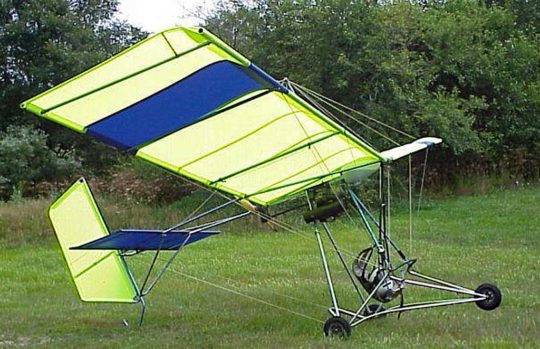
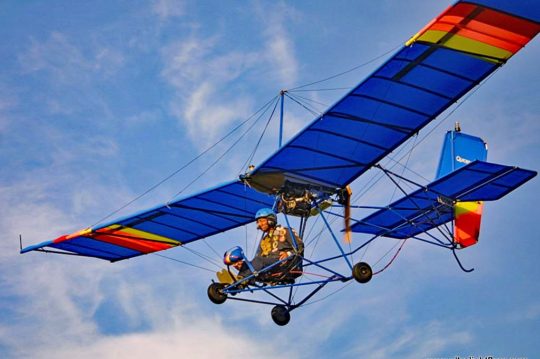
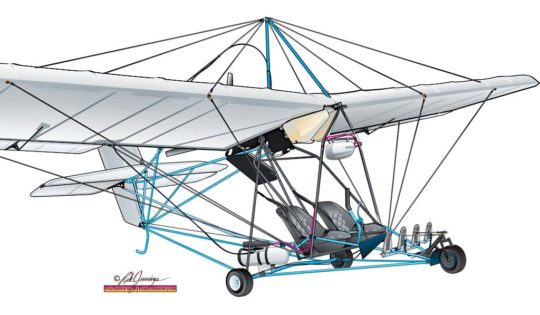
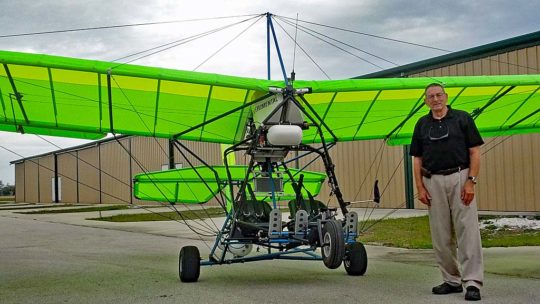
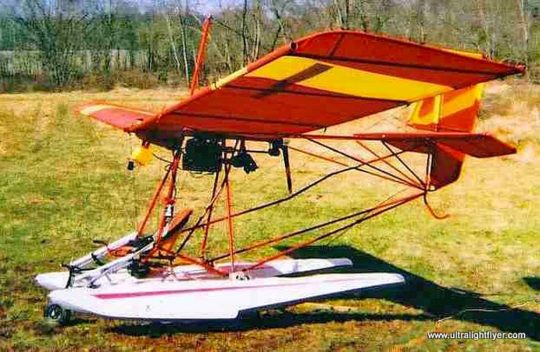 The MX model abandoned the weight shift idea — this was too foreign to lots of potential customers. Instead, it used stick-and-rudder two-axis controls, but with a difference. The joystick connected to the elevator and rudder while the rudder pedals were connected to spoilerons on top of the wing.
The MX model abandoned the weight shift idea — this was too foreign to lots of potential customers. Instead, it used stick-and-rudder two-axis controls, but with a difference. The joystick connected to the elevator and rudder while the rudder pedals were connected to spoilerons on top of the wing.